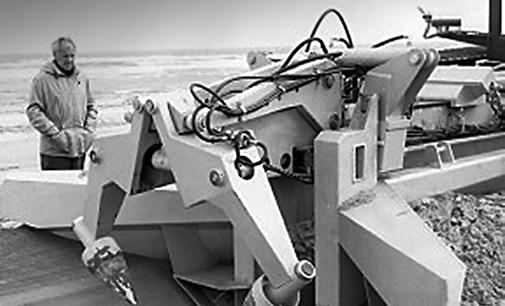
9 minute read
Ploughing Ahead: 50 Years of Subsea Excellence from SMD
PLOUGHING AHEAD
50 YEARS OF SUBSEA EXCELLENCE FROM SMD
Advertisement
As Soil Machine Dynamics (SMD) enters its 50th year, we caught up with Chairman, Mike Jones, to take a look back on its pioneering history and catch a glimpse of what’s in store for the future.
RICHIE ENZMANN: How did SMD start?
MIKE JONES: Back in 1971, Dr Alan Reece, who was then a lecturer in the Agricultural Engineering Department, at the University of Newcastle, started up SMD to facilitate his consultancy work. Our first product was to simulate the wear on turf by football studs – very appropriate to the North East! Around this time Alan was approached by BP who had to find a way to protect its pipelines in the newly developing North Sea from the threats of trawling as well as the occasional anchor.
Following extensive research, he eventually left the University with some colleagues and his best graduates to set up an operation to design and manufacture the first machines to bury pipelines and flowlines on oilfields like Magnus with early clients including Brown & Root and UDI Marconi.
RE: Tell us more about SMD’s first few innovations...
MJ: The product which really enabled SMD to develop and prosper as an enterprise was the Cable Plough that was built primarily for the telecommunications market. What made this plough a world first was its ability to bury and protect cables as they were laid from the cable vessel efficiently and safely.
This was in 1983 with BT being our first customer but it was quickly adopted by the other main players at the time, Cable & Wireless and AT&T. The business premises at this time were still
1971. University of Newcastle Professor Alan Reece sets up SMD and develops plough technology (Courtesy of SMD)
at Alan’s home in Wylam, Newcastle, but given the plough’s success, the team moved from Alan's home to Beaumont House, an old school house near Bywell further along the Tyne.
Alan also acquired the Pearson companies based in Low Walker to form the Bywell Group – a fabrication and a defence equipment company building mine ploughs to protect tanks and military vehicles.
RE: What happened next?
MJ: The advent of fibre optics in the 1990's meant that submarine telecoms took off, and so did SMD.
Following Alan’s son John taking over as MD and Alan staying on as Chairman in 1994, we diversified into other products for burying and maintaining cables in different ground types: heavy tractors with cutters for hard ground and ROVs with water jetting for sands.
Another relocation happened around this time too, this time to be with the other Bywell Group companies at Low Walker based on the Tyne, near the old shipyards.

1992. Beach trials of the first commercial seabed tractor launched into the telecoms market in 1992 (Courtesy of SMD)


1998. MD3 Power Cable plough launched (Courtesy of SMD)
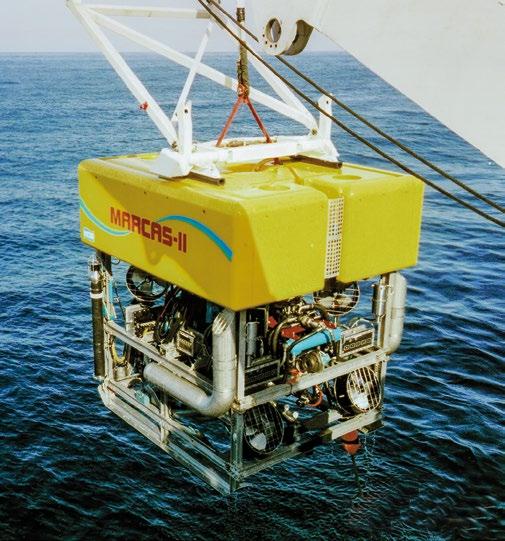
We also developed our own launch and recovery equipment bespoke to the needs of trenchers, and later using this knowledge to develop equipment for laying fibre optic cables. This included the Safe Fleet Drum Engine that instead of using knives or rings to control the helix of cable on the drum, had a clever moving surface which was kinder to the cable.
1995. First commercial free swimming jetting ROV launched (Courtesy of SMD)
By the end of the millennium we could deliver all of the cable lay, subsea burial, and subsea maintenance equipment on a single cable ship. At this time SMD employed over 100 people.
RE: How did SMD, now a telecoms equipment company, cope with the Dot-com Crash?
2005. First Work Class ROVs sold to the Oil and Gas market (Courtesy of SMD)
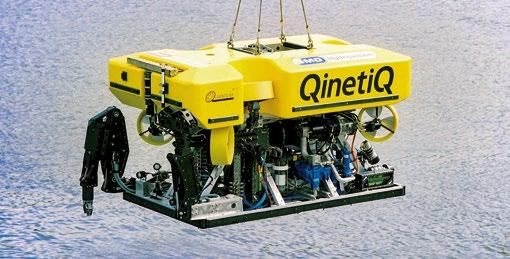
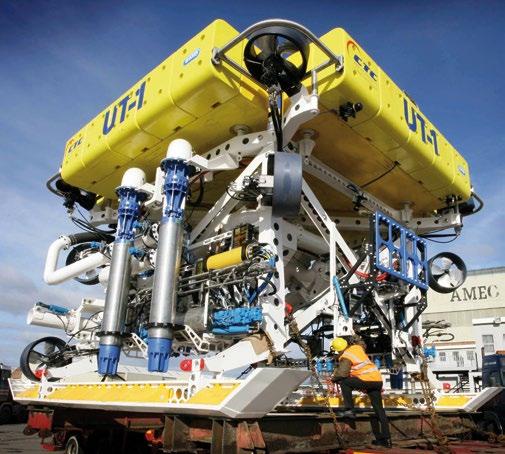
2003. Cable lay & burial tractor delivered for offshore wind (Courtesy of SMD) 2008. UT1 Worlds most powerful free flying ROV developed and delivered (Courtesy of SMD)
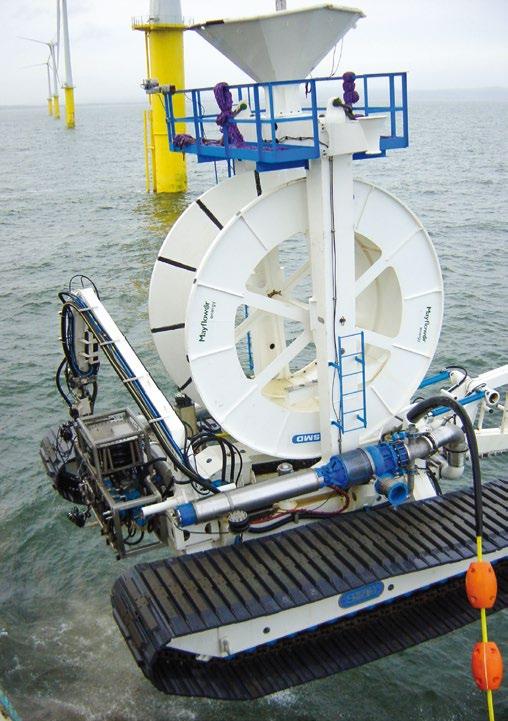

2017. SMD were technical lead in the VAMOS project – viable alternative mine operating system (Courtesy of SMD) 2018. Multi-mode Pre-lay plough system delivered with boulder clearing, trenching and backfill capabilities, the first system of its kind in the market (Courtesy of SMD)
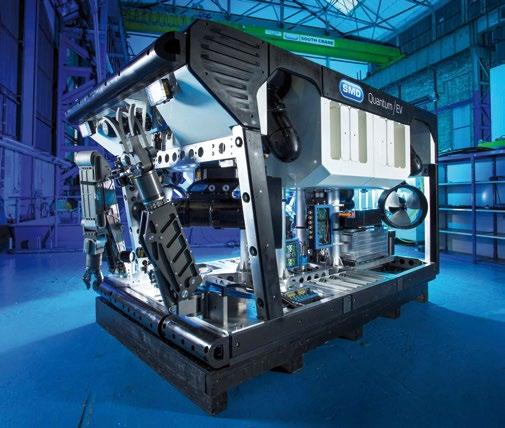
2019. Quantum EV – electric WROV technology in final development (Courtesy of SMD)

MJ: When the 'Dot-com' bubble burst, our main market disappeared overnight, and we had to retrench and rapidly reposition SMD.
We bought the brand, IP, and assets of Hydrovision – an Aberdeen based manufacturer of Curvetech® components and work class ROVs. In 2004, we had started to design and manufacture our own range of Work Class ROV systems – the Quantum, Quasar, and Quasar Compact. Winning clients like Subsea 7 and Hallin Marine, the business began to grow again.
It’s in our DNA to innovate and back in 2003, at the same time we were beginning to manufacture our own work class ROVs, we also built our wind farm inter-array trencher for the round one wind farms. This was a novel machine called the Lay & Burial Trencher for Mayflower – it could lay and bury an inter-array cable while its host TIV was erecting the turbine.
Later that decade, we delivered two notable trenchers: UT1, the world's most powerful free-flying jet trencher; and RT1, the world's most powerful rock trencher.
In 2007, we won a contract to build the world's first deep water, commercial seafloor mining machines for Nautilus Minerals based in Brisbane.
Then John Reece decided to sell the company, and I and the other Directors, Peter Imlah, Richard Howarth and Paul Atkinson, did a management buy-out backed by private equity group, Inflexion.
At this stage SMD had grown again to around £40m revenues and was much more diversified across markets and products. Then in late 2008 Andrew Hodgson joined as CEO.
RE: Tell us more about the Nautilus Minerals project
MJ: The Nautilus project finally restarted in 2010, following the recession, and became a much larger project with three different machines for preparing the mine site (Auxiliary Machine), cutting the bulk of the ore on shelves (Bulk Cutter) and collecting the ore from stockpiles (Collection Machine). Along with the Launch and Recovery Systems and Umbilical it is the largest contract and heaviest contract we have ever performed. It was a hugely technically challenging project to create a system which could continuously mine at depth, on extreme slopes, in very hard rock and to minimise its impact on the environment. But we did it, they were delivered in 2016 and tested in shallow water in PNG.
RE: How did SMD end up being acquired by CRRC Times Electric? MJ: During this period, we also won several 'super bid' contracts for ITech (part of Subsea 7) to provide ROVs for services to Petrobras in Brazil. This resulted in SMD supplying 42 work class ROV systems – Centurion Ultras and Centurion SP's. We continued to grow within the renewable sector, particularly within windfarms and had a very busy period supplying trenching machines for the Round 2 wind farm cable installation in the UK and Europe.
These included trenchers and ploughs for Fugro, General Cable/NSW, Technip Offshore Wind, Global Marine and Reef Subsea. A standout project was the QTrencher 1400 for Fugro – that set a new benchmark for a high power, modular system that could trench in the widest range of conditions and be launched in heavy sea states.
The growth in ROVs and Trenchers along with the Nautilus project really put us on the map. We tripled our revenues to over £100m, and staff to over 400, all based in our new home on the River Tyne in Wallsend.
Our success had gone global and in 2015, we were acquired by CRRC Times Electric from Zhuzhou in China. CRRC is a diversified company with core technologies in power conversion and control, and markets in rail, EV's, wind turbines, high power semi-conductors, and marine. It was a natural step for the evolution of SMD.
I spent more and more time in Shanghai at this point, establishing our new operation and was made CEO in 2017.
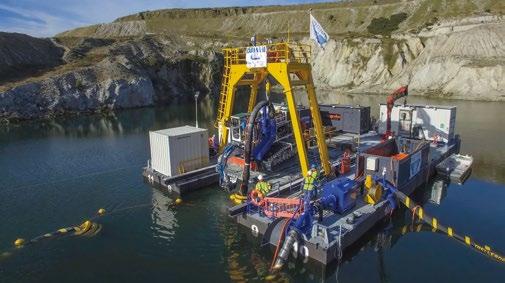
RE: What’s next for SMD?


2019. Quasar reaches maximum operating depth of 6000m during sea trials – see top right image (Courtesy of SMD) 2019. Quasar reaches maximum operating depth of 6000m during sea trials (Courtesy of SMD)

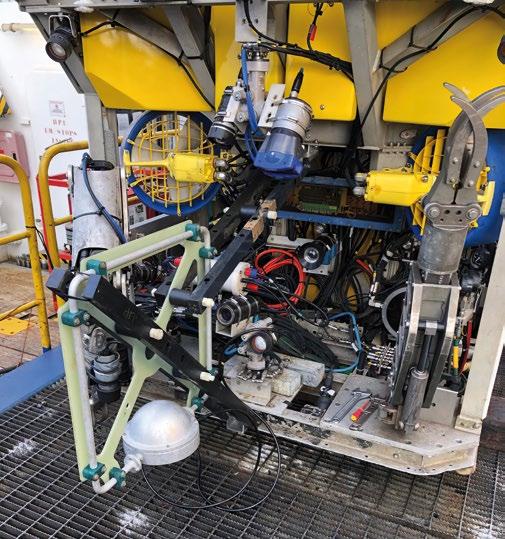
2020. BT 2400 – aka Deep Diggit – the world’s deepest trencher delivered to Van Oord (Courtesy of SMD)
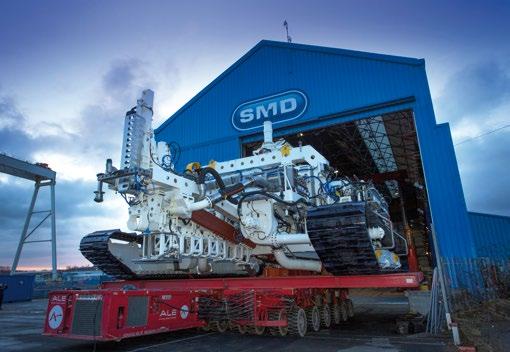
MJ: Since the acquisition, there has been heavy investment in R&D and in particular a big focus on developing next generation core technologies for subsea Electric Vehicle's (EV's). Focusing initially on using this in Work Class ROVs and their LARS.
We have also received support from InnovateUK for this development. The first of these, the Quantum EV, is in the final stages of development and testing. The smaller, Atom EV, uses the same building blocks and a new electric TMS is in testing.
The vehicles will bring new levels of control, performance, and efficiency which together with reduced need for maintenance will enable use with ASVs and in residence. The EV will also be a greener, more cost-effective solution for more conventional applications.
Wind Farms will also remain a core focus for us. We have supplied more powerful and capable trenchers and ploughs to Van Oord, Boskalis, AssoSubsea and Prysmian among others. We have also invested in the development of a more accurate cable detection system, Artemis, that can track untoned cables beyond 3m, in addition to its use on live cables.
2021. SMD’s latest innovation the Artemis ground breaking cable tracking system mounted for offshore trials (Courtesy of SMD)
As well as wind, we are continuing to develop our subsea minerals arm, being the lead partner in the VAMOS project, funded by the EU Horizon 2020, to develop technologies for on-land submerged mining.
The situational awareness and visualisation system can also be applied to deep water mineral collection. They have also been developing ways of harvesting seafloor nodules to minimise disturbance to the environment and maximise efficiency.
The past 50 years has seen SMD navigate a path through many markets and technologies as a pioneer in the subsea arena. This has been achieved through a culture of pursuing engineering excellence and looking at problems differently to solve them for our customers. It has also been done through great teamwork and making SMD an enjoyable place to work. None of this would have been possible without so many talented leaders, engineers, technicians, and other members of the team that have committed themselves to doing this.










